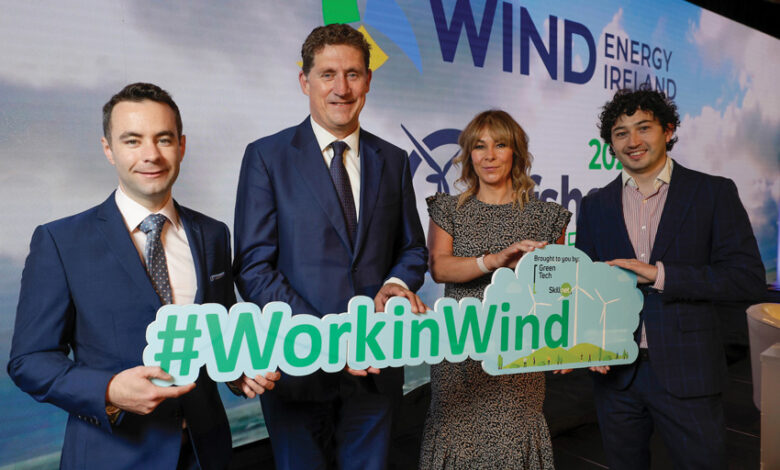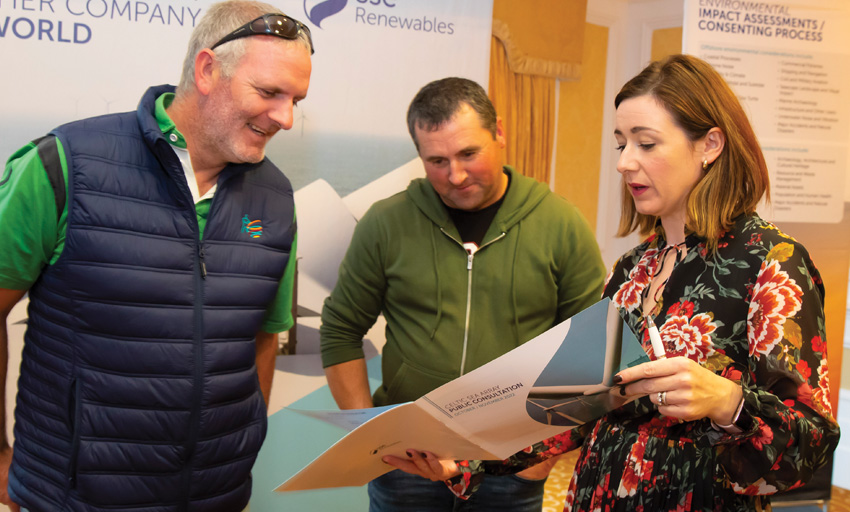This must be the year of delivery

Ireland’s offshore wind energy revolution is starting to feel a lot more real. Nearly two decades after we built what was then one of the biggest offshore wind farms in the world, it looks like this will be a decisive year for offshore renewable energy, writes Wind Energy Ireland CEO Noel Cunniffe.
The signs of progress are unmistakeable. In December 2022, Minister Eamon Ryan TD gave industry a big boost when he confirmed the first set of Maritime Area Consents for new offshore wind projects.
This clears the way for these projects – Oriel, North Irish Sea Array, Dublin Array, Codling Wind Park, Arklow Bank and Sceirde Rocks – to start initial conversations with An Bord Pleanála before submitting planning applications later this year.
The consents followed the publication of the terms and conditions for the first Offshore Renewable Electricity Support Scheme auction, which will open in April, and included welcome changes such as 20-year contracts and partial indexation.
We are also seeing progress in addressing some of the key industry concerns around the need to develop the electricity grid. EirGrid has already started to put in planning applications for new grid reinforcements, with many more due in 2023, while working to update Shaping Our Electricity Future to reflect the Government’s increasing ambition for offshore renewables.
I was proud to attend the launch of ESB Networks’ exciting new strategy and hear its commitment to invest €1 billion annually for the next decade to support the energy transition. We still do not have the port infrastructure we need but ports like Rosslare, Shannon-Foynes, and Cork Dockyard are bringing serious proposals forward and the Department of Transport is getting more and more engaged.
Pulling all of this together is the Government’s new Offshore Wind Delivery Taskforce which is coordinating the work of various departments and state agencies across planning, market design, supply-chain and skills development.
New companies, like Copenhagen Infrastructure. Partners, which recently announced its partnership with Statkraft, are coming into the Irish market and our members are hiring more and more of the people we need to deliver the targets set out in the Climate Action Plan.
There must be no doubt. Those targets are achievable. We have the pipeline of projects to deliver the targets and even to go beyond them. We have the investment and the determination.
Outstanding challenges
What we need most of all is to build on the momentum we are now starting to see and tackle some of the key outstanding challenges.
Achieving our targets and cutting our carbon emissions in line with the law requires nothing less than a national mobilisation of people and resources not seen since Thomas McLaughlin proposed in 1923 that an impoverished island emerging from four years of war should build the largest hydro-electric dam the world had ever seen.
While EirGrid and ESB Networks have clearly upped their game and are starting to deliver our planning system remains completely unfit for purpose. An Bord Pleanála is desperately under-resourced, and it lacks the necessary skills and expertise to deal with offshore renewable energy. Onshore projects are already spending more than a year in the planning system and then, if and when they secure permission, they are vulnerable to a court challenge.
On more than one occasion last year, when a judicial review was allowed of a grant of planning permission for a wind farm, An Bord Pleanála could not even defend their own decisions. The Government’s plans to reform the planning system, to try and speed up the process, are welcome and we will study the proposals with great interest, but they are only a part of the solution.
“An Bord Pleanála needs a massive investment of funding and personnel. It does not matter what legislative reforms are introduced if there are not enough inspectors, marine ecologists, and planners, backed up by a top inhouse legal team, ready to implement them.”

An Bord Pleanála needs a massive investment of funding and personnel. It does not matter what legislative reforms are introduced if there are not enough inspectors, marine ecologists, and planners, backed up by a top inhouse legal team, ready to implement them.
Investment needed
We need to see the same kind of investment in other existing state agencies like the National Parks and Wildlife Service and the resources put in place in the new Maritime Area Regulatory Authority (MARA).
It is still unclear when MARA will be able to accept applications from the next batch of offshore wind projects for their Maritime Area Consents. Every day of delay here makes our 2030 targets more difficult to achieve.
As we strengthen our planning system, we need to see a similar level of focus on resourcing for the CRU to ensure it is delivering on its responsibilities. Right now, in the offshore wind industry there is still an unacceptable level of uncertainty on exactly how new wind farms will be able to connect to the electricity grid.
EirGrid’s essential work on system services, supporting the integration of renewable energy onto the system, is stalled as they wait for the CRU to put the resources in place, while our members are struggling with a completely unworkable decision on articles 12 and 13 of the Clean Energy Package which needs to be urgently revisited.
The new Climate Action Plan sets a target of 7GW of offshore wind energy by the end of 2030 with 2GW set aside for the production of green hydrogen. We are heading in the right direction; the policies and structures are beginning to fall into place, but the whole system is desperately under-resourced, and we are still moving too slowly. This year must be the one where the development of offshore renewable energy is accelerated.
This is the year for delivery.
T: 045 899 341
E: office@windenergyireland.com
W: www.windenergyireland.com






